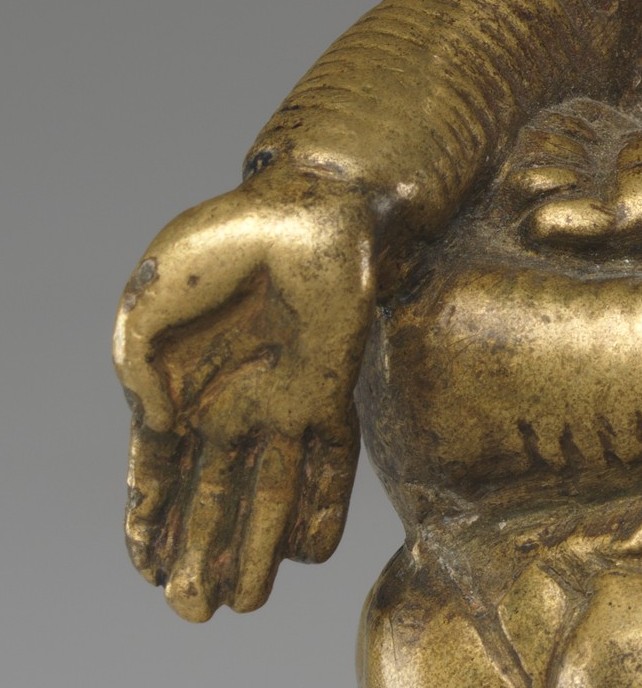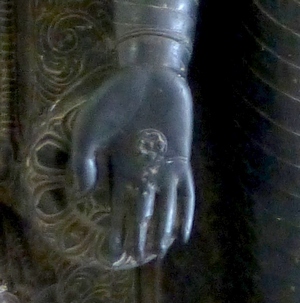One of the most prominent features of Buddha images is the position of the hands. The following are some of the most common
Samadhi Mudra: Meditation
Both hands are placed on the lap, one on top of the other. (See all)
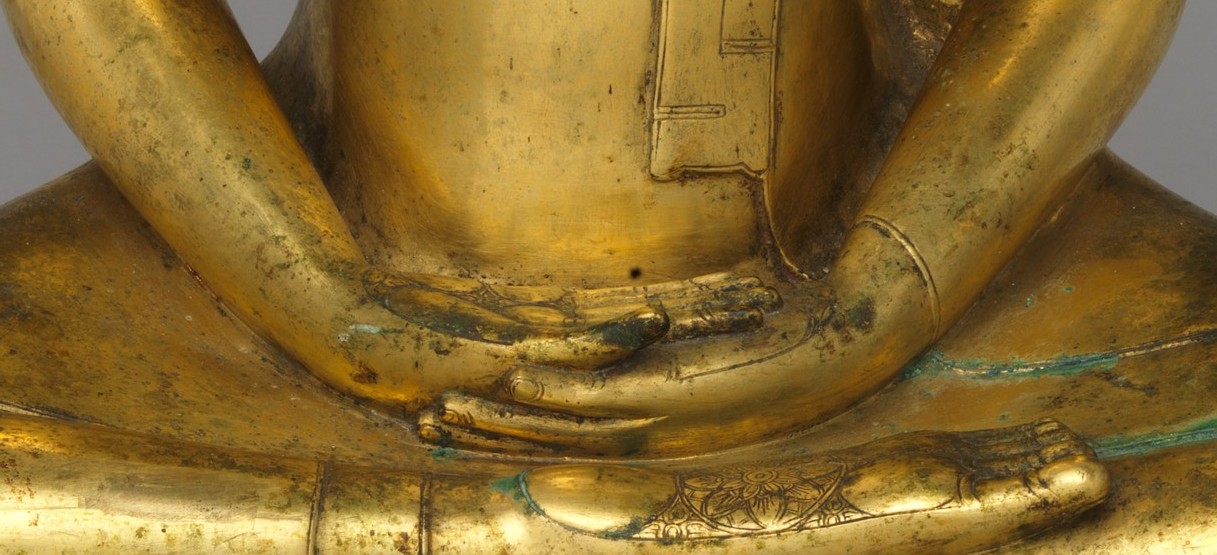
Abhaya Mudra: Giving Fearlessness
Five fingers are pointing up with the palm facing forward. (See all)
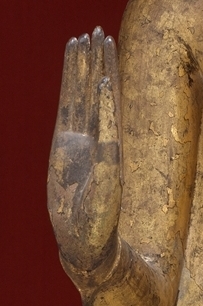
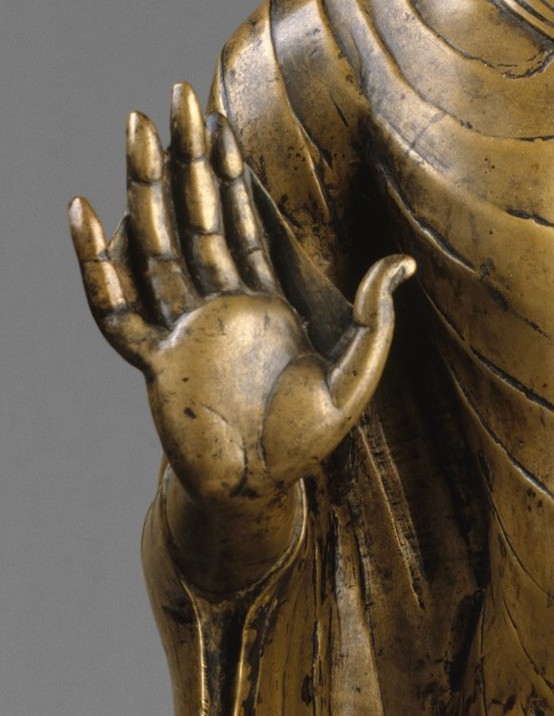
Bhumisparsha Mudra: Touching the Earth as witness
The right hand is covering the right leg with the fingers touching the ground. The left hand is on the lap with palm upturned. This position represents the incident on the night of the Buddha’s enlightenment when Mara challenged his ability to attain enlightenment. The Buddha touched the earth, calling it to be his witness. (All images)

Vitarka Mudra: Teaching
Index finger and thumb are touching and remaining fingers are pointing up. (See all)
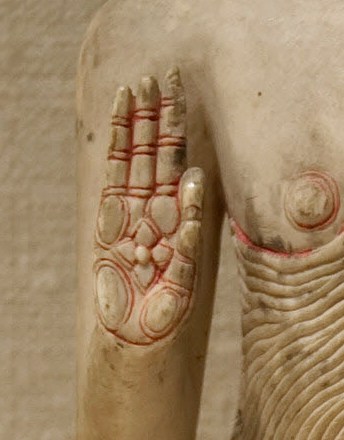
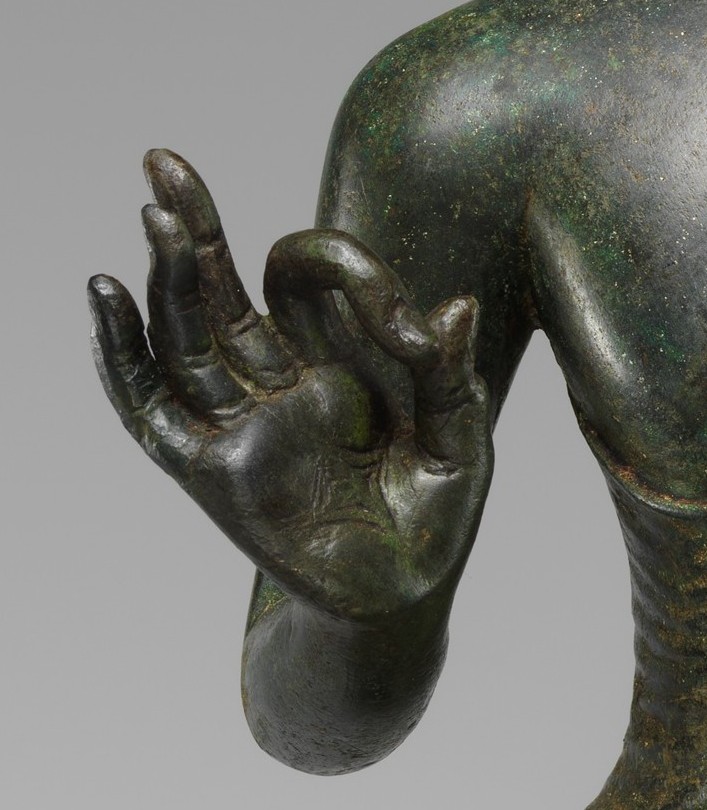
Dhammachakka mudra: Turning the Wheel of Dhamma
Both hands are in the vitarka mudra (see above) with one hand facing up and the other hand facing down. It is symbolic of the Buddha’s first sermon at the deer park in Isipathana. (See all)
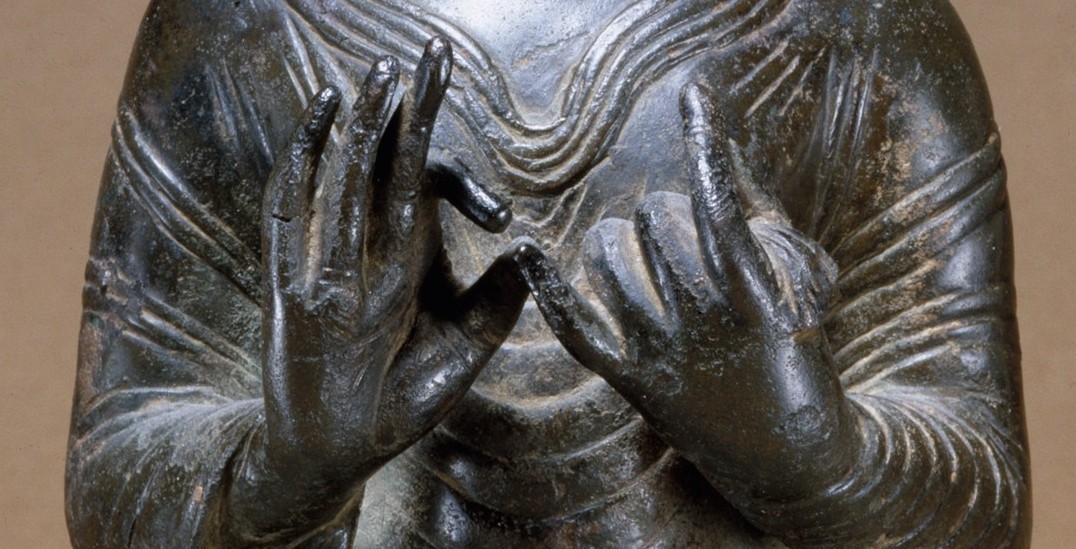
Varada Mudra: Giving
This can be made with ether hand, while standing or sitting. It is often seen with abhaya mudra. Frequently the opposite hand is holding the robe. The palm is facing out with the fingers pointed down. When sitting it can easily be confused with bhumisparsha mudra. In the varada mudra the thumb will be on the outside of the body. (See all)
